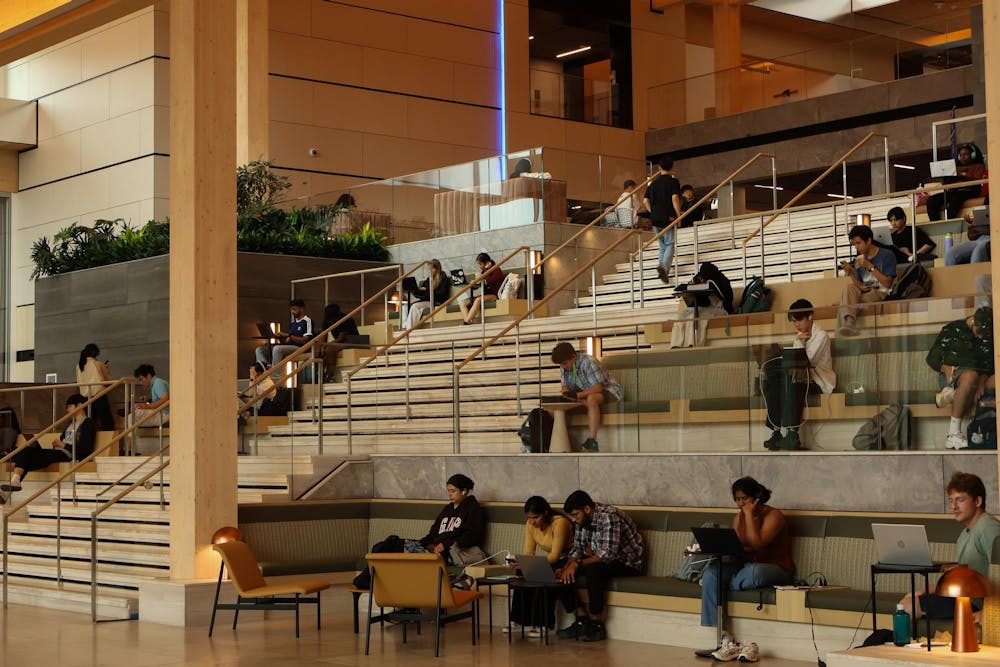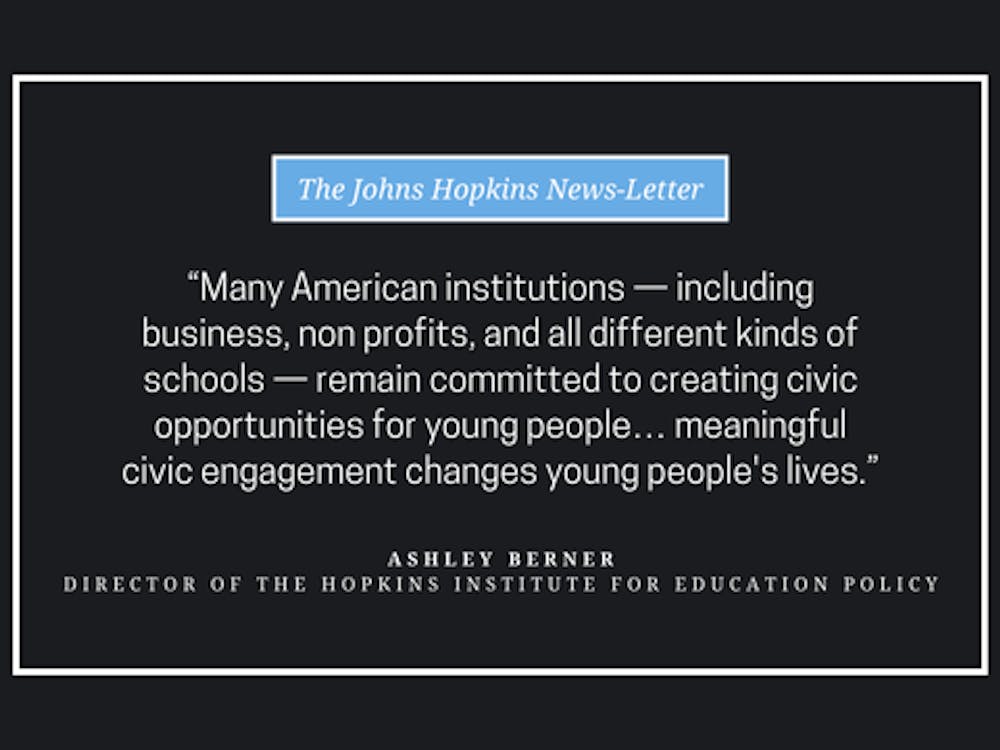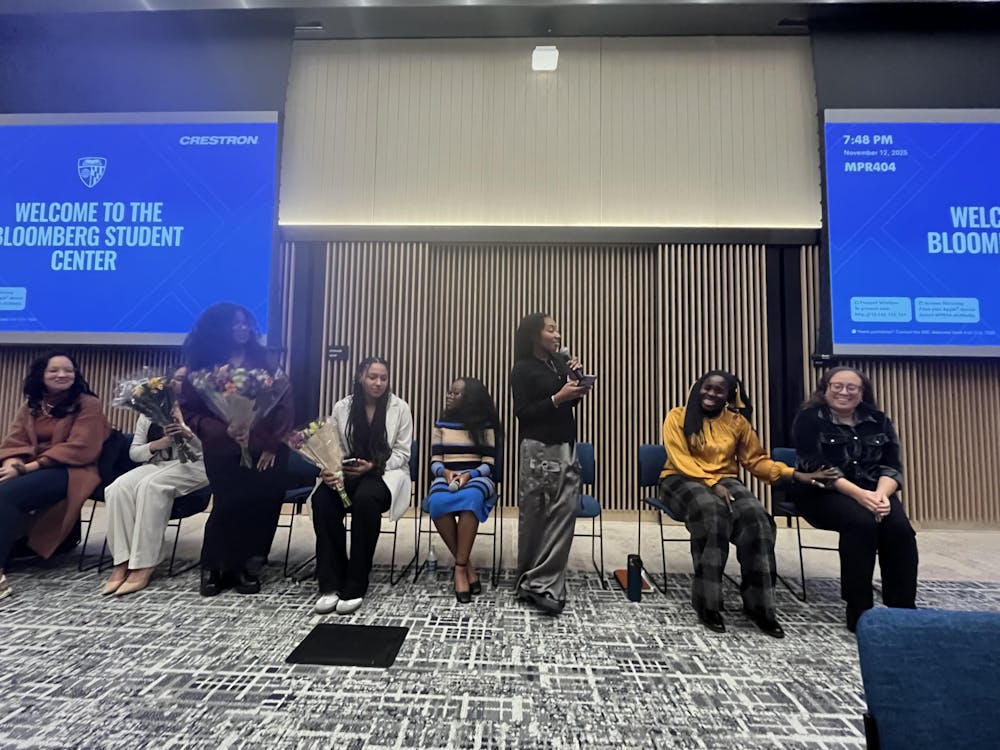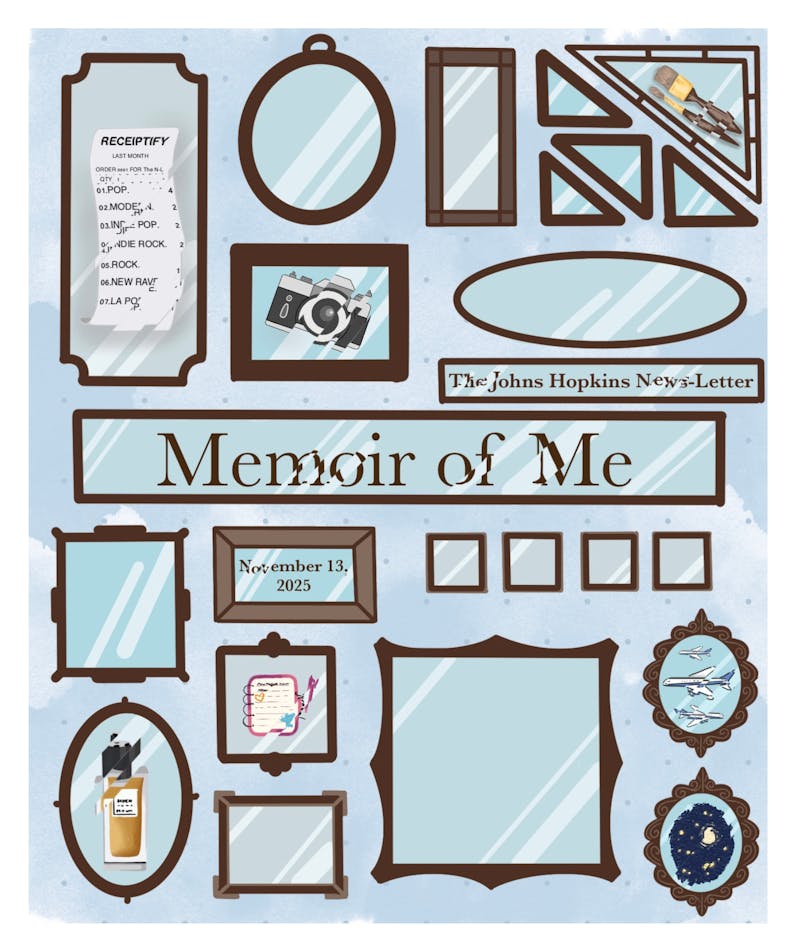The Bloomberg Student Center, affectionately nick-named “the Stuce” by Hopkins students, had its soft opening on Monday, Aug. 25. With only a few features ready and dining options unavailable until mid-October, the reception of the Student Center was varied, with positive and negative reactions.
The News-Letter conducted a survey on the impact of the Student Center before dining options opened, with the results showcasing both enthusiasm for the new space and uncertainty about how it will ultimately fit into campus life. When asked how often students use the Student Center, 60% of students responded that they use the center around one to three hours a week, with the next majority (16.7%) answering that they use it six to nine hours a week.
Students were also asked to rate their ability to socialize and connect with others in the Student Center on a scale of one to 10. The overall average was 5.57, reflecting a mixed response: More than half of the student responses (56.7%) rated their experience between one and five, while less than half (43.3%) of students placed it between six and 10.
Senior Zaynab Mirza explained her appreciation for the Student Center even though she has limited time to spend there. For her, the space offers a rare opportunity to step away from academics and reconnect with classmates.
“I come here not as often as I would like, because I have so much homework, so I’m usually in the Brody Reading Room, locking in,” she said. “But whenever I want a break or I want to talk to human beings, I always come to the Student Center because I think that it’s such a good place to interact with people.”
Mirza went on to explain how her experience with the Student Center has been shaped by her position as a senior and a transfer student. While she expressed gratitude for being able to enjoy the space before graduating, she also shared a sense of bittersweetness at not being able to see the building at its peak.
“I’m very conflicted because I also haven’t seen the MSE Library because I’m a transfer student, so I came here last year,” she explained. “I’m still super grateful that I still got to see [the Student Center] in my last year, but I’m also hurt that I will not see it come to fruition because it’s not fully complete.”
For some students, the new facility has become both a symbol of excitement and frustration. While the University promotes the Student Center as a hub for connection, some students have found its approach to be at odds with their academic needs.
Sophomore Ember Simmons shared her own experience with the Student Center, describing a moment that highlighted the tensions between its intended function and the reality of student use.
“I had this incident where I was studying in one of the multipurpose rooms for [Organic Chemistry] — with my friends — and we got kicked out of the room after it was being shown to some investors, or something,” she said. “The custodian that kicked us out had told us that they weren’t supposed to tell us this, but that Hopkins doesn’t want us to study in the Student Center, and that’s why all the tables are at an uncomfortable level and that they’re playing music really loudly, constantly.”
Simmons noted that moments like these reflect a larger disconnect between how the University envisions the Student Center’s use and how students actually experience it day-to-day. While administrative intent may prioritize community engagement, students often navigate between the competing expectations of wanting it to be a space for focus versus social connection.
“I think it’s fine to use [the Student Center] as a socializing space,” she explained. “I think some people use it pretty obnoxiously, though, where they’re like jumping around and like, kind of being ignorant to the other people that are trying to lock in around them, but it’s also being used as a spot to hang out, so it’s understandable as well.”
Through observation, the day-to-day reality of the Student Center is defined by both the students who use it and the staff who work to help the building function. Staff insights reveal how the Student Center is being lived in and adapted by students, sometimes in different ways from how it was originally envisioned.
An anonymous employee, using the alias Trevor, explained his role in the building and his observations about its use in an interview with The News-Letter, offering a behind-the-scenes perspective on how students are making the space their own.
“Mostly, students are treating it as a study space, [and] although it was not built for that purpose, it is built for whatever people want to do here. [...] We try to implement sound systems to allow people to talk more and feel more freely to be loud,” he said. “Right now, all the feedback we received has been really good. Most of the complaints stem from inability to access different rooms without coming down to the front desk and getting let in by the staff workers.”
The topic of accessibility came up in survey responses, with students divided on whether the layout of the building facilitates or complicates daily movement across campus. For some students, the Student Center has become a convenient connector between different parts of campus. For others, they felt as though the terrain and layout could be cumbersome.
In the survey, 36.7% of students expressed that they use the pathways that the Student Center provides “every day,” 33.3% of students responded that they use the pathways “most days” and 30% of students answered that they use the pathways “some days.”
“[The] terrain outside is kind of ridiculous and the back exits spit you out into a place that’s only really useful if you’re going to Brody or Gilman/Maryland,” one response writes.
“Very useful. It makes the lives of people who can’t climb stairs much easier with the elevators and the accessible routes,” another response answers.
The overall rating of the Bloomberg Student Center’s accessibility of pathways and campus shortcuts had an average rating of 7.57 on a scale of one to 10. From one to five, 16.7% of students answered within this range, while 83.4% of students responded in the range from six to 10.
Junior Cheryl Famulare shared her limited use of the Student Center in an interview with The News-Letter, noting that the design feels more decorative than functional.
“I come here, never. Only when a group project asks to meet here. Yeah, I wouldn’t come all the way here,” she explained. “[The Student Center is] just a staircase, the whole this is just stairs [...] I’m glad they opened, even though it’s not completely done.”
On a scale of one to 10, students rated the atmosphere of the Student Center a 7.07 with an overall positively skewed distribution. Most responses clustered around the 7 to 8 range (46.6%), suggesting that students generally viewed the space as welcoming and enjoyable. This sentiment echoed among student responses, with anonymous responses praising the design/concepts, liveliness and overall feel of the space. For many, the Student Center represents a refreshing addition to campus, even if not all the features are fully implemented.
In an interview with The News-Letter, junior Juwon Ro described his admiration for the design of the student space, underscoring the architectural appeal of the Student Center while acknowledging that its purpose has been blurred in the absence of dining.
“I really like the architecture and the part where they use rainwater for indoor plants,” he explained. “[The] only problem I have is, at the moment, there’s not much in [the space]. I think people use it as a studying spot too much, which — to be fair, the library is closed — so it kind of just turned into a Brody 2.0.”
Ro further elaborated on the balance of strengths and limitations, emphasizing that while the Student Center’s sleek design is one of its defining features, an incompleteness is still present.
“A positive is definitely the architecture. Like the overall design looks really clean,” he said. “A negative — like I said — it’s, to be honest, kind of unfinished.”
In terms of usefulness, the majority of students (56.7%) cited that they use the Student Center for studying, while the second most common use (26.7%) stemmed from organizational events as their main reason for visiting. These patterns suggest that the Student Center’s role is still developing, shaped largely by student needs and by the ongoing lack of food vendors.
Captain of JHU Zinda, junior Arnav Koppala expressed his positive opinion of the Student Center in an interview with The News-Letter. As a captain, Koppala highlighted its benefits for the Hopkins dance teams, referencing the dedicated space, crafted floors and audio capabilities. For him, the space has been especially transformative for Hopkins dance teams like Zinda.
“[For] all the [...] dance teams, [...] we love the fact that we have a dedicated space. The floors are nice, there’s great audio capacities and capabilities in the center, and it really allows for us to have a dedicated time to really craft our respective styles,” he explains. “We craft like Bollywood, Jhumar, Kuthu, Hip-Hop, we fuse styles together to create something awesome — and we really need this because, before the Student Center, we didn’t have that [space].”
Koppala also noted that he appreciated the Student Center’s vibrant atmosphere and the way that the building contributes to campus energy. He anticipates increased usage once dining options open, and expressed excitement about how dining will further activate the area.
“I feel like I look forward to coming to this place. I just like the idea that I can just be here and work, but there’s a sense of liveliness that comes with it. It’s not like a dead space,” he said. “I feel like if [dining] comes, so many people are going to love it. So people really are looking forward to that.”
Prior to the recent opening of dining options in the Student Center, students expressed their disappointment in the lack of food options available upon first opening, as well as their enthusiasm for dining to become available.
“I was disappointed that the food vendors weren’t open when the student center opened,” one response reads. “I’m also concerned about whether or not I’ll be able to use meal swipes there because I don’t want to spend dining dollars on a whole meal there.”
While many students look forward to dining and view the Student Center as a promising addition to campus, not all feedback has been positive. A contrasting undercurrent of humor and criticism runs through the student survey responses, reflecting how the Student Center has quickly become both a source of pride and a target for playful ridicule.
“It should be renamed to the Stuce,” one survey response writes.
“Waste of my tuition,” reads another comment.
Junior Juan Landa illustrates this juggle between critique and attachment in an interview with The News-Letter. His perspective highlights how even skeptical students can joke about the space.
“I do know that my friend called the [Student Center] the Stuce and my other friend was like ‘Yeah, don’t call it that,” he explains. “So, I started calling it the Stuce in front of him so that I could annoy him, and it kind of just stuck with me.”
As of Oct. 6, dining options at Ralph’s Marketplace, including Connie’s, Urban Kitchen, Koshary and Bento Sushi, opened in the Bloomberg Student Center. The News-Letter will continue to monitor student engagement with the Student Center and report on findings in light of these new developments.





